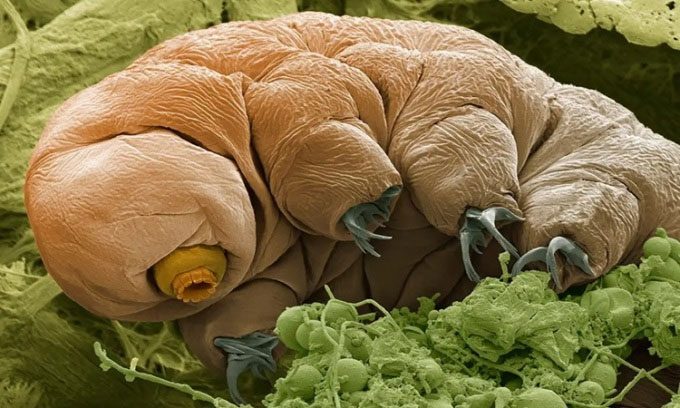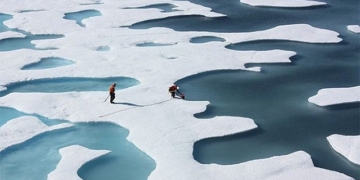Researchers predict that tardigrades will be the last surviving organisms on Earth following a nuclear war or cosmic events like a supernova explosion that could destroy the planet.
Life has existed on Earth for at least 3.7 billion years. However, in the future, Earth may only have one surviving species. It is not cockroaches or scorpions, nor humans, but most likely the tiny tardigrades, according to IFL Science.

Tardigrades are renowned as the most resilient creatures on Earth. (Photo: Science Photo Library)
A significant threat to the survival of all living organisms is nuclear weapons. After a nuclear war, radioactive dust would spread globally. At the same time, soot from the bomb explosion would enter the atmosphere, creating a nuclear winter—a prolonged period of darkness and cold. This could lead to the collapse of the ecosystem’s foundation by preventing photosynthesis, resulting in mass starvation among animals. Researchers indicate that life in some parts of the planet could survive a nuclear war for a time, even if humans were no longer around. Among them are resilient invertebrates like cockroaches and scorpions, as well as microorganisms.
On a larger scale, threats from astronomical physical events such as gamma-ray bursts, large asteroid impacts, and supernova explosions have the potential to effectively eradicate life on Earth. For instance, a supernova explosion would unleash massive amounts of cosmic radiation onto Earth, destroying the ozone layer that protects against harmful ultraviolet rays from the sun. In 2017, scientists from the University of Oxford and Harvard studied the resilience of life in the face of astronomical physical events. They concluded that the only animals that could escape extinction from any astronomical disaster are tardigrades.
“We were surprised to find that even if a nearby supernova explosion or a large asteroid collision would spell disaster for humanity, tardigrades might remain unaffected. Therefore, a vast number of species, or even entire groups, could go extinct, but life would continue,” said Dr. David Sloan, co-author of the 2017 study and research assistant in the Department of Physics at the University of Oxford.
Tardigrades are eight-legged microorganisms known as the most resilient life forms on the planet. In the biological classification, they are neither bacteria, amoebae, archaea, nor fungi. To survive extreme environments, these tiny creatures enter a deep hibernation state called cryptobiosis (a state of metabolic standstill), removing more than 95% of water from their bodies and curling into a ball. They can survive temperatures as low as -272.95 degrees Celsius and as high as 150 degrees Celsius, as well as extreme pressures and strong radiation. Tardigrades can even survive in the vacuum of space and endure a supernova explosion.
However, life on Earth will come to an end with the death of the sun. The sun will begin to die in about 5 billion years when it runs out of hydrogen. As it progresses to the next stage as a red giant, the sun will expand, becoming large enough to engulf the closest planets—Mercury, Venus, and then Earth. During this process, Earth will heat up and be engulfed in intense radiation. The oceans will evaporate, and the atmosphere will be lost, leaving behind a scorching, barren landscape. Even tardigrades will not survive under such conditions.




















































